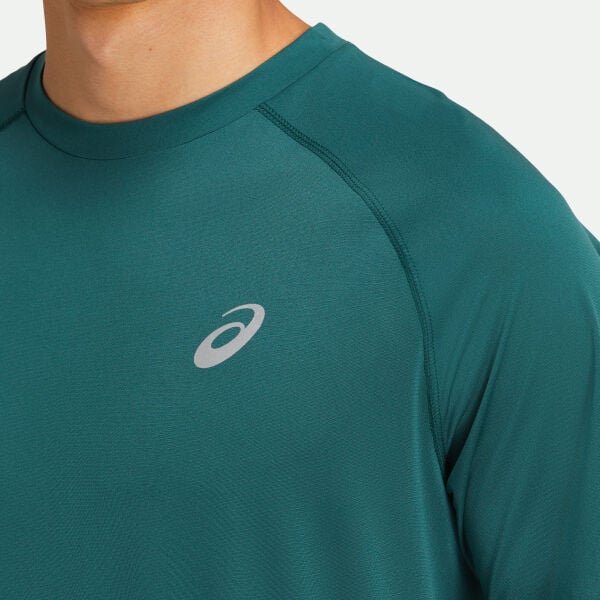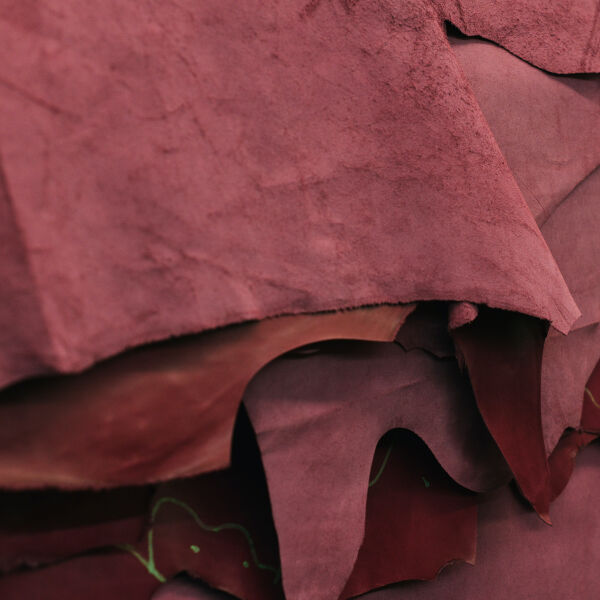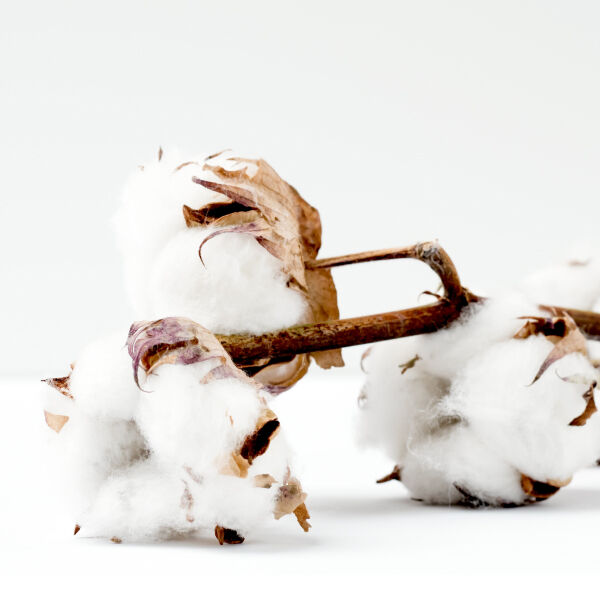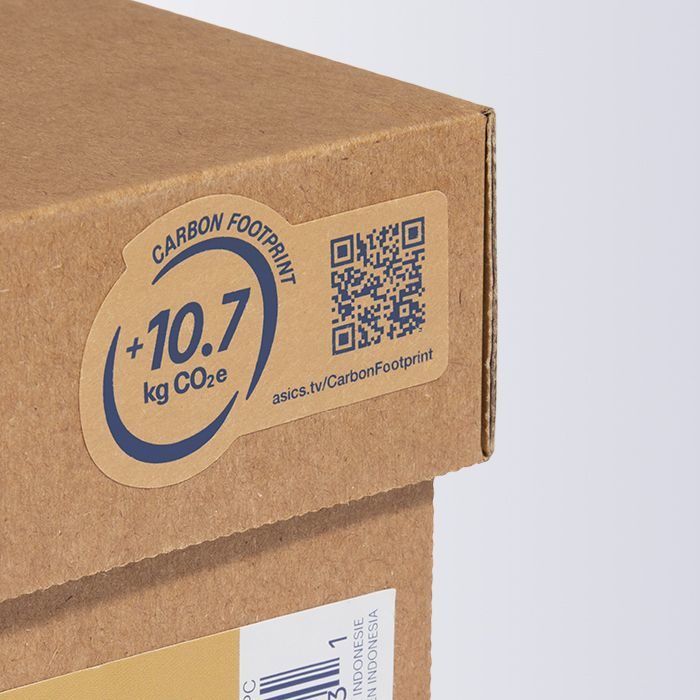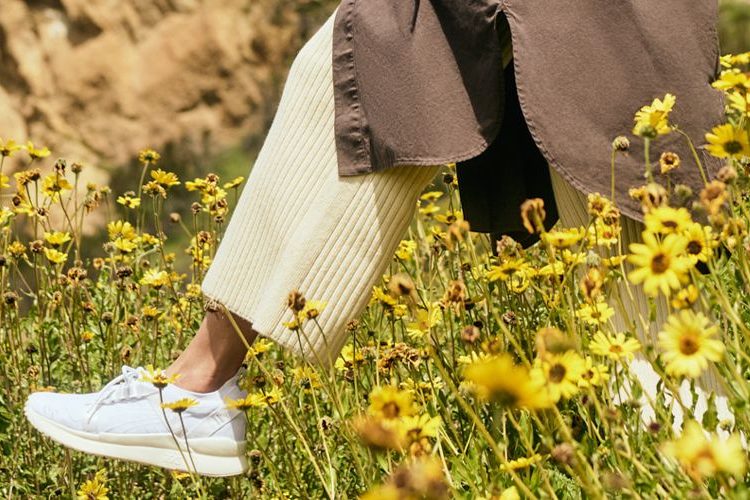Since ASICS was founded in 1949, its goal has been to help people have a sound mind in a sound body. But for a sound mind and body, we also need a healthy planet to run on. That’s why ASICS is taking action for a better future.
By making a contribution and ensuring that the air is clean and that flora and fauna flourish, ASICS hopes that runners and athletes will have clean air to breathe and beautiful environments to move in, both now and for future generations.
To achieve this, ASICS is committed to a sustainability strategy that includes becoming less dependent on non-sustainable materials and processes. The goal is to find more sustainable alternatives to these materials by 2030.
ASICS' sustainability pillars
To maximise positive impact, ASICS is focusing on two key pillars:
- People - Focuses on mental and physical well-being and human rights in the supply chain.
- Planet - Focuses on climate action and circularity.
Focus on people
When it comes to consumers and communities, ASICS is committed to helping its customers and local communities improve their mental and physical fitness and health. For employees, ASICS promotes a company culture of diversity and creativity, supporting its staff to reach their full potential.
Regarding the supply chain, ASICS builds transparent, fair, and ethical partnerships and empowers people within their supply chains.
Focus on the planet
In terms of reducing the impact of products on the planet, ASICS focuses on the materials used, production processes, and sustainable design. Additionally, they aim to make a positive contribution to global climate goals by adapting their working methods, including their production processes.
The circular approach of ASICS
ASICS supports their planet-focused efforts with a circular approach, reducing material use, reusing materials, and producing durable products with a longer lifespan.
Important aspects of their circular approach include:
- Design: Creating products that require fewer resources.
- Materials: Using recycled, organic, and water-efficient alternatives.
- Production: Generating renewable energy and utilising efficient, eco-friendly production processes.
- Usage: Continuously improving quality to extend the life of products.
- New life: Taking back packaging for reuse and recycling.
ASICS' material sustainability ambitions
ASICS aims to find more sustainable alternatives to non-sustainable materials and processes by 2030. They have set sustainability ambitions for their most common materials.
Polyester
Polyester's durability, elasticity, and water-repellent properties make it great for sports equipment. However, its production relies on non-renewable resources and generates high carbon emissions. Therefore, ASICS will replace all polyester materials with more sustainable, recycled alternatives by 2030.
Leather
People have used leather in clothing and footwear for centuries. This natural, durable, and versatile material comes as a by-product of meat consumption. However, transforming skin into usable leather involves labor-intensive steps and the use of chemicals and water.
Due to the environmental challenges associated with leather production, ASICS is committed to sourcing more sustainable leather from suppliers associated with the Leather Working Group (LWG). Currently, ASICS already sources more than 80% of their total leather for shoes from LWG-accredited suppliers, who have been recognized for their sustainability efforts.
Cotton
Although ASICS uses relatively little cotton, cotton consumes a lot of water and requires significant amounts of chemicals (pesticides and fertilizers). Therefore, ASICS aims to source all of its cotton as 'sustainable cotton' by 2025. This includes organic cotton, fair trade cotton, and recycled cotton.
ASICS' sustainable improvement goals
In addition to their material sustainability ambitions, ASICS has set several general improvement goals:
- 2021 (✅): 90% of new running shoes contain recycled material.
- 2030: 63% reduction in CO2 emissions in direct activities and the supply chain compared to 2015.
- 2030: 100% renewable energy in all corporate buildings.
- 2030: Commitment to 100% recycled polyester.
- 2050: Net-zero CO2 emissions.
ASICS sustainable sneakers
You may be wondering, "How can I contribute?" A simple way is to choose ASICS items with the sunflower icon. This symbol represents ASICS' commitment to sustainability and environmental conservation.
You can find the sunflower icon on:
- Shoes with an upper made from scrap materials or at least 30% recycled material.
- Clothing made from scrap material or where at least 50% of the main material is recycled.
Cellulose nanofiber (CNF)
Consider shoes that contain cellulose nanofiber (CNF), a bio-based material used in the soles of ASICS shoes. CNF can be produced from almost any type of plant biomass, making it an abundant and renewable resource. By integrating CNF into shoes, ASICS reduces its ecological footprint.
An example of an ASICS shoe with cellulose nanofiber is the Gel-Kayano 25, the world's first running shoe to feature CNF.
ASICS' sustainability initiatives also apply to the Gel-Kayano 30, which has a mesh upper that is about 70% recycled, reducing emissions. The ASICS Court FF 3 is another sustainable choice, made from durable, bio-based materials. Looking for a shoe with the lowest CO2 emissions on the market? Opt for the Gel-Lyte III CM 1.95.
Conclusion
Whether you are a seasoned athlete or simply enjoy a healthy lifestyle, let us all take a step in the right direction and contribute to a world where both body and planet thrive. After all, we only have one Earth, so let's take good care of it!
Want to learn more about ASICS? Click the button below:



